You might have seen enigmatic letters and numbers such as NCM 711, NCM 811 or NCA when you were reading articles about batteries. What do the code-like battery terms mean?
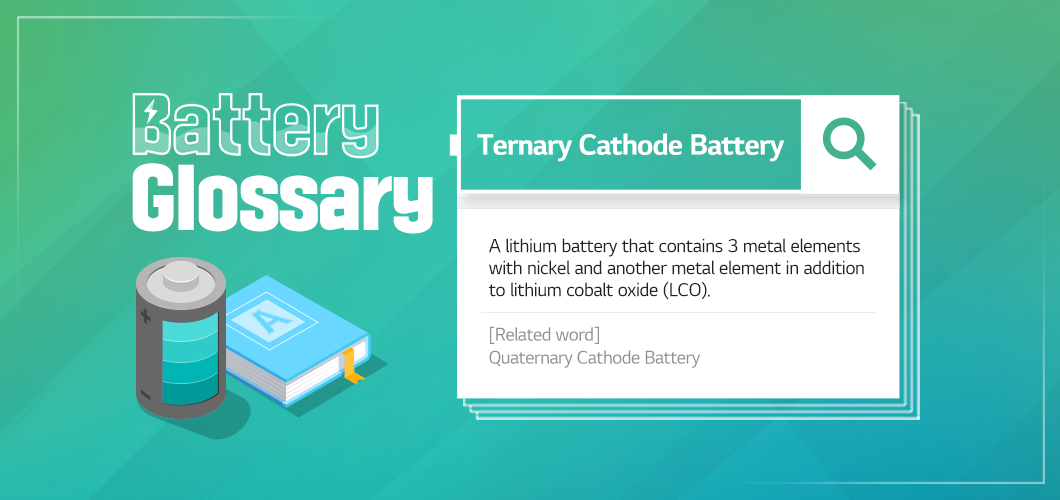
What is a Ternary Cathode Battery?
Lithium-ion batteries produce electricity through the chemical reactions created when lithium ions shuttle between the cathode and anode. Lithium, a cathode material, is unstable in its elemental form and exists in the form of lithium metal oxides (LiMO₂), combining with other metal elements. If lithium cobalt oxide (LCO), a common cathode material in lithium-ion batteries, adds nickel and another element to have 3 elements in the cathode, a “ternary cathode battery” is produced.
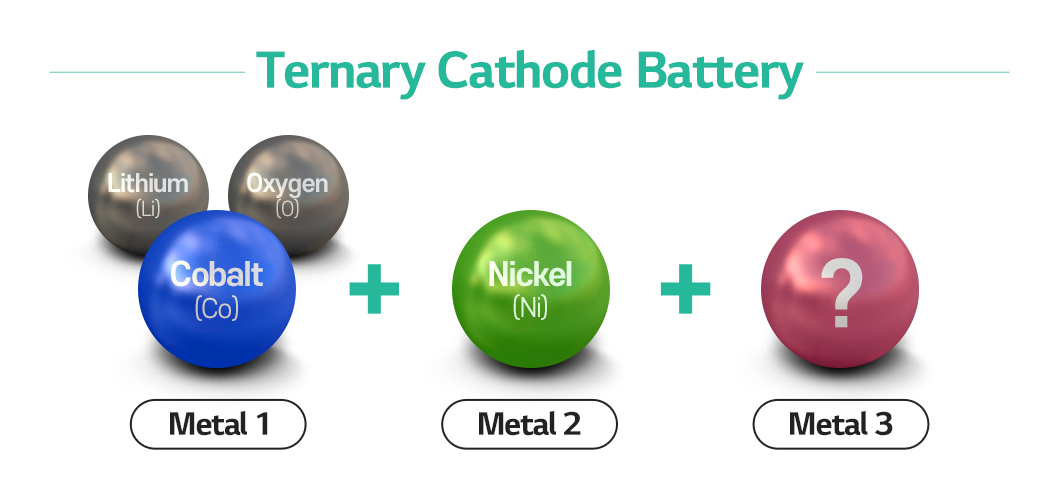
Understanding Ternary Cathode Batteries
To learn about ternary cathode batteries, you should first know the characteristics of metal elements in the cathode. Nickel is the key to energy density; cobalt and manganese reliability; and aluminum power output of batteries. As each of these elements has different characteristics, the performance of a battery varies depending on the element and proportion used for making the battery.
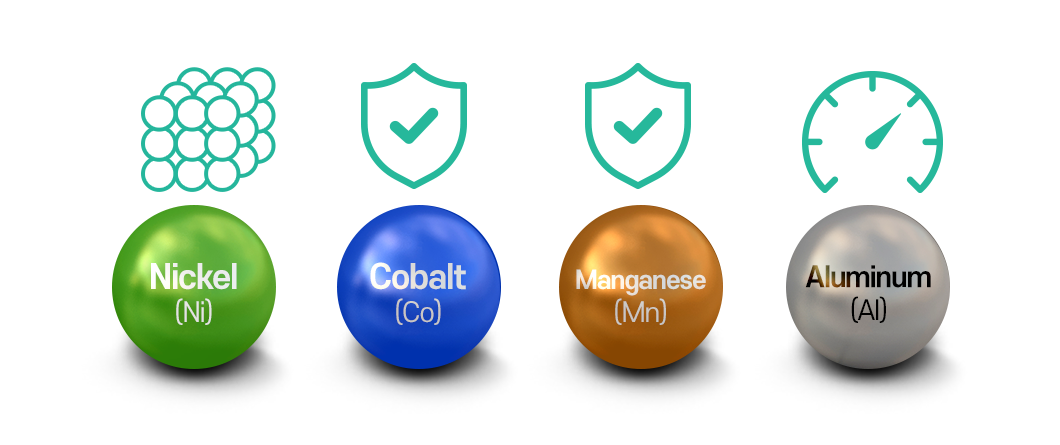
Types of Ternary Cathode Batteries
The most common ternary cathode batteries are nickel-cobalt-manganese (NCM) and nickel-cobalt-aluminum (NCA) batteries. First of all, the correct notation for NCM is LNCMO. It is called NCM for convenience’s sake and is created when nickel (Ni) and manganese (Mn) are mixed into lithium cobalt oxide (LCO). NCM consists of varying ratios of nickel, cobalt, and manganese, making it one of the most widely used cathode materials, primarily for EV batteries. In response to the skyrocketing raw material prices, other types such as NCM 712 and NCM 811 are developed by raising the proportion of nickel that improves energy density while reducing the proportion of costly cobalt.
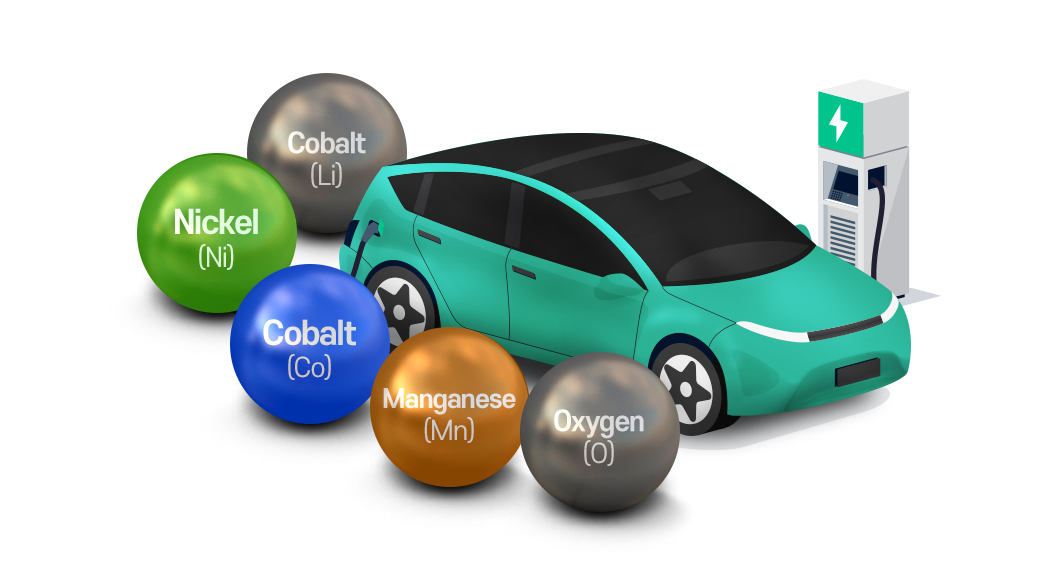
NCA is also a cathode material in which nickel (Ni) and aluminum (Al) are combined with lithium cobalt oxide (LCO). The ratio of nickel, cobalt, and aluminum in NCA is configured based on the specific application of the battery. In general, NCA has a high nickel content and contains aluminum, giving it higher energy density and power output compared to other cathode materials. Due to these characteristics, NCA is primarily used in mobility and IT batteries, such as cylindrical batteries.
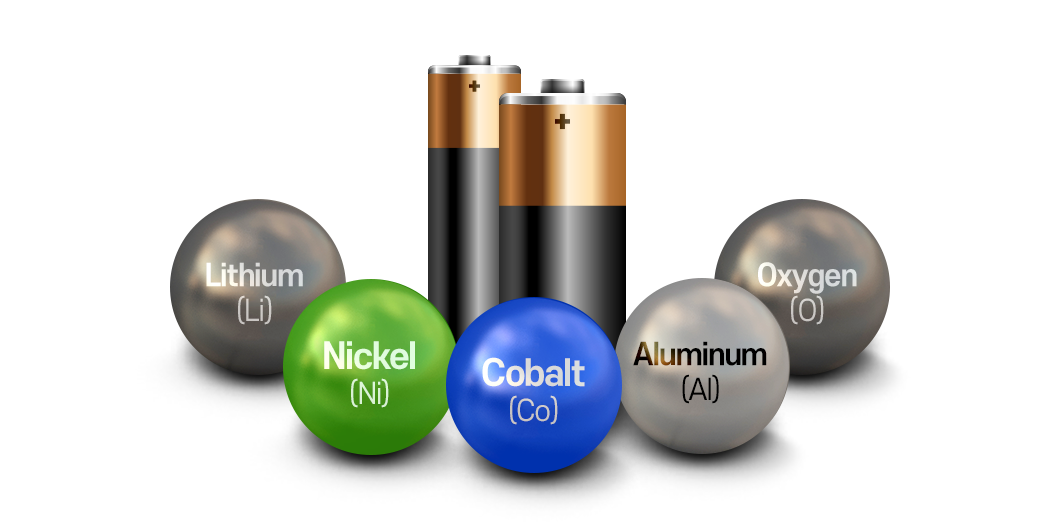
Battery makers put a high priority on developing cathode materials because they are critical for battery performance and capacity. Now, next time you see the terms like NCM, NCM811 or NCA, you will know what elements are included at what ratio in the cathode material.





